Cardamine concatenata, cutleaf toothwort, is a small native perennial herbaceous plant that lives in the woods and blooms in spring with white to pinkish flowers. It is a true spring ephemeral. It blooms before the trees leaf out and the above ground parts are gone in 4 to 5 weeks.
Cardamine concatenata has had some name upgrades. Its previous genus was Dentaria and its previous species was laciniata. However, the genus and species names were not changed at the same time!
Flowers
Inflorescence/Flower cluster:
The Cardamine concatenata inflorescence is a crowded flower cluster in a bractless raceme (a single stem with flowers with short stalks and in this case no bracts where the stalks meet the stem) at the top of an unbranched stem. The flowers open from the bottom up. The flower buds can be seen at the top.
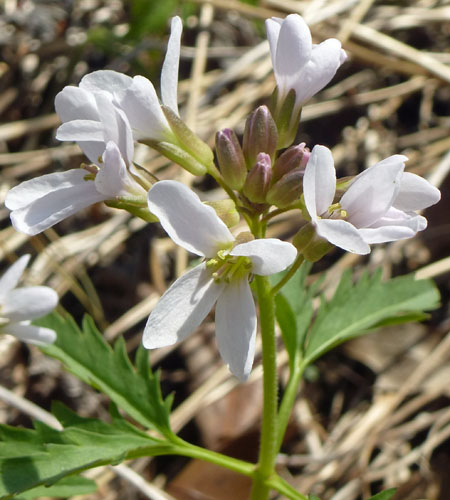
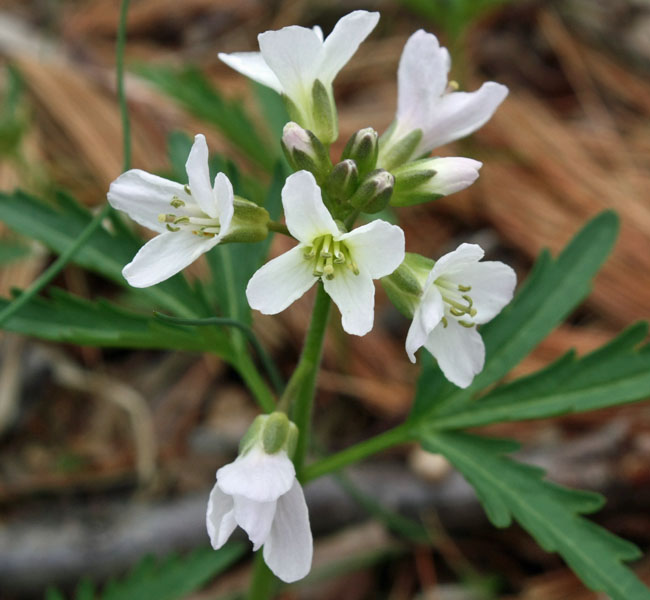
Individual Flower:
The cutleaf toothwort flowers are white to pale pink and about 3/4 inch long and half to 1 inch wide. The flower has 4 sepals, 4 separate petals which do not open completely. The greenish yellow center has 6 stamens and one pistil with a long slender style. Four of the stamens are long and 2 are shorter.
The flower provides nectar and pollen to its pollinators which are mainly bees.
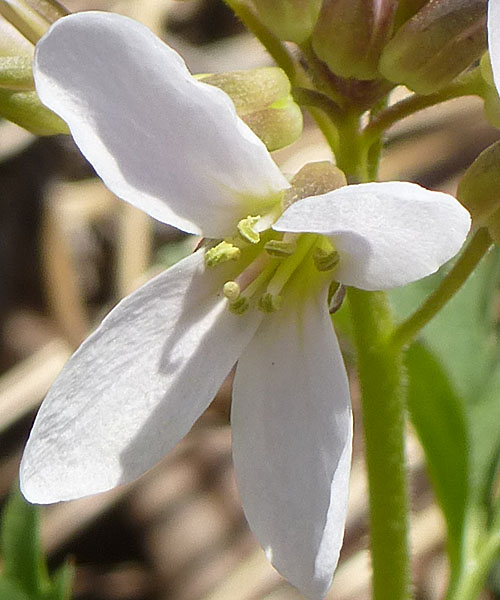
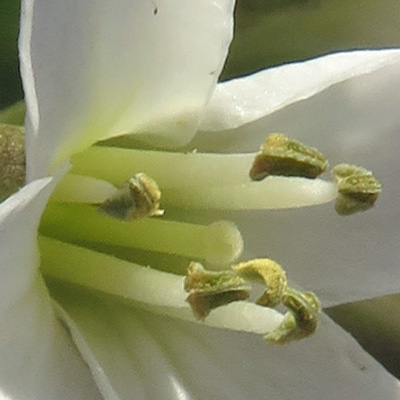
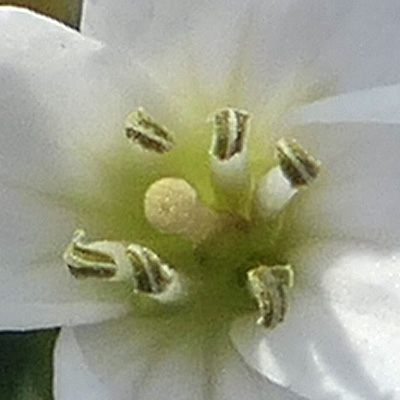
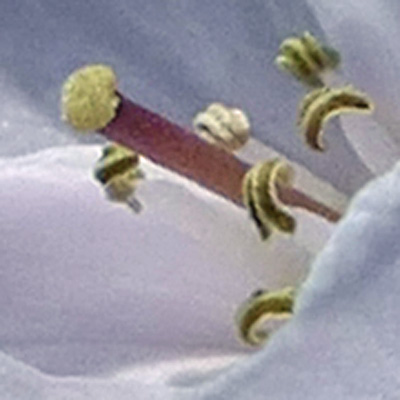
The photo below shows the anthers are dehiscing - shedding pollen.
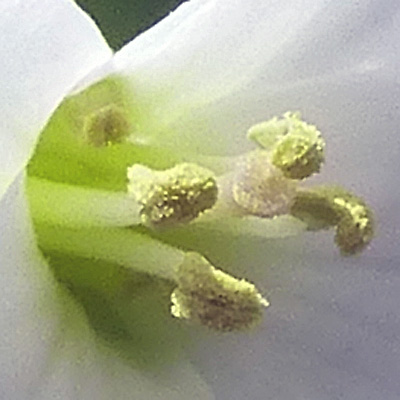
The photo below shows the 4 longer stamens and the 2 shorter stamens.
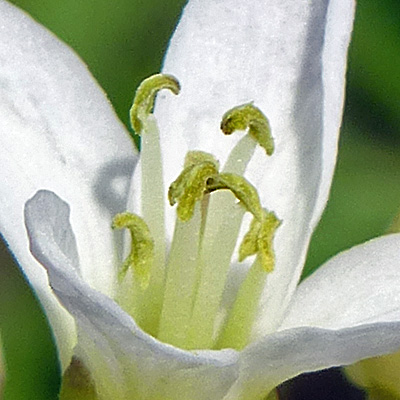
Fruit
Fruit: The first photo below shows developing fruits. The fruits are more or less upright. They are bean-like pods about 1.5 inch long and 1/8 inch wide coming to a long narrow tip.
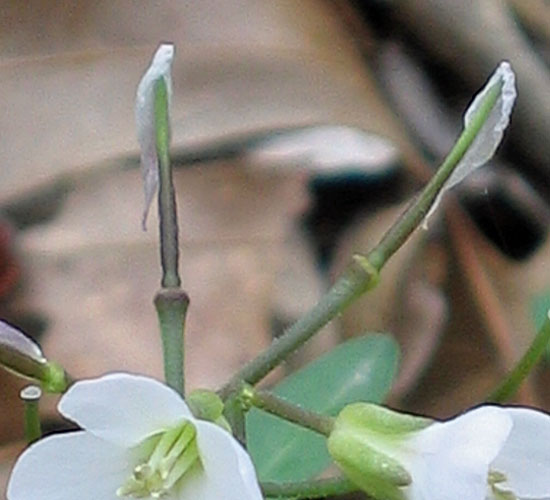
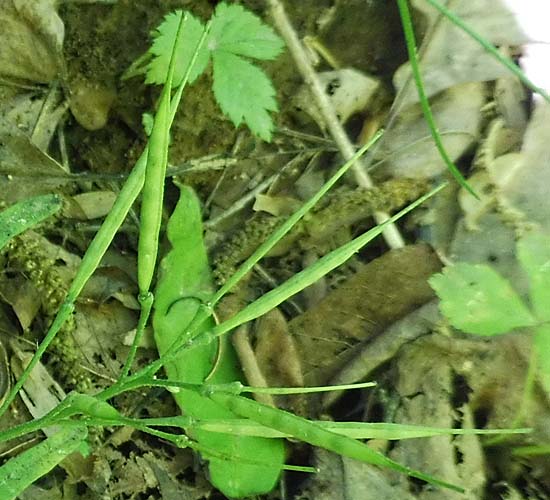
Leaves
There are 4 toothwort species in NJ and the flowers are similar. It is the leaves that help distinguish between the species. Cutleaf toothwort has both rhizomal & cauline leaves. The cutleaf toothwort has deeply cut leaves and both the rhizomal and cauline leaves are similar.
Rhizomal leaves are leaves that emerge directly from the underground rhizomes (horizontal underground stems). They differ from basal leaves which are leaves that emerge from the base of the plant stem. However, frequently, the rhizomal leaves are called basal leaves. The rhizomal leaves are separate from the plant stems so do not need to grow at the base of the plant stems.
The rhizomal leaves emerge singly on a long petiole (leaf stalk); the whole leaf is about 6 inches long. Each rhizomal leaf is deeply cut into 3 to 5 leaflets. The leaflets may be deeply cut into lobes. The leaflet/lobe margins may be coarsely jagged and may have sharp spines at the ends. The leaf shapes are somewhat variable. The petioles (leaf stalks) of the rhizomal leaves are round.
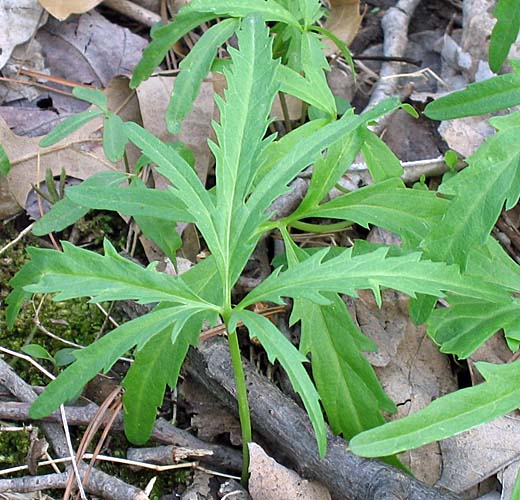
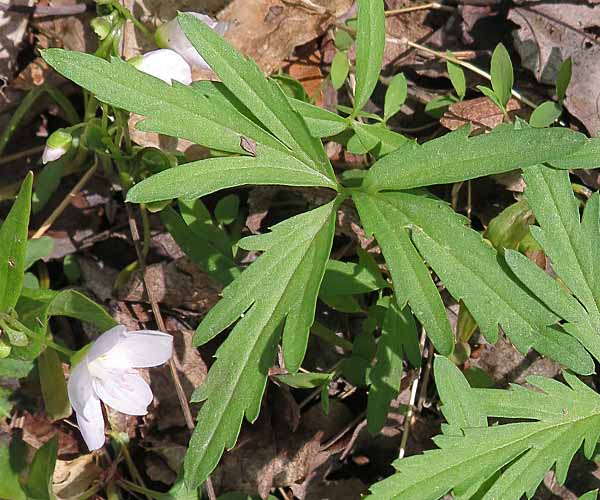
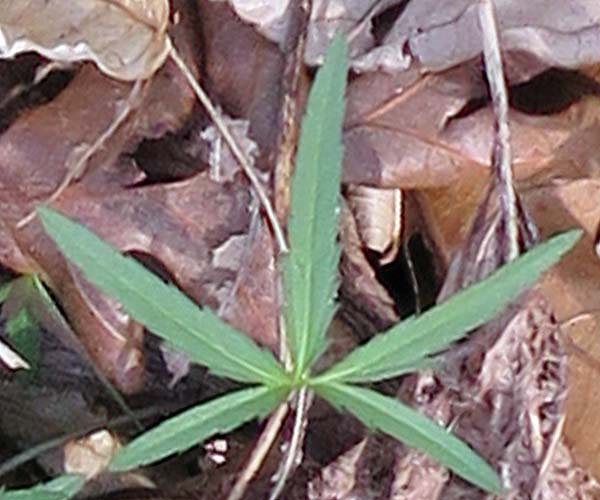
Cauline leaves: Cauline leaves are leaves that grow from the stem and not at the base of the stem. There are 2 to 3 whorled cauline leaves below the flowers. These leaves are similar to the rhizomal leaves and are somewhat variable. The petioles of the cauline leaves are grooved and short.
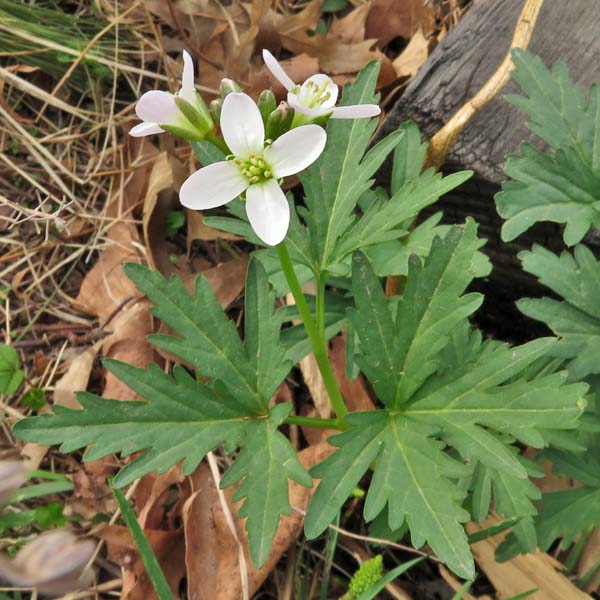
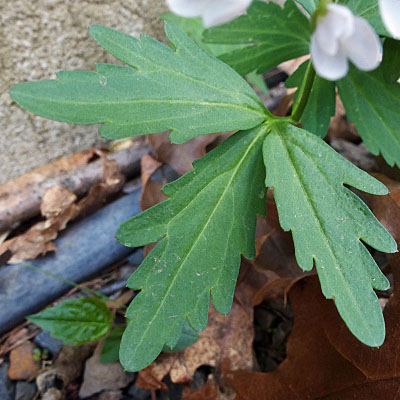
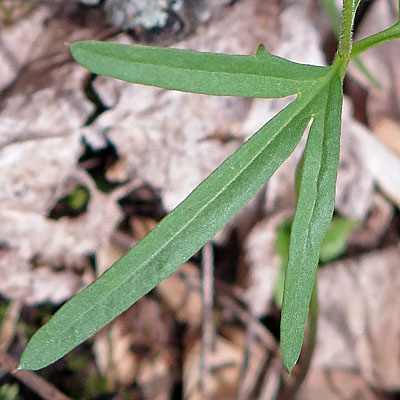
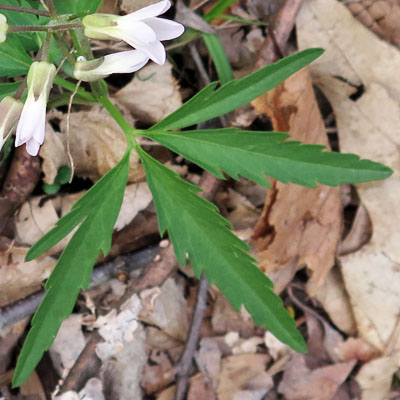
Plant
The plant grows to about 8 to 19 inches tall. The stem is erect and unbranched. The stem is smooth below the cauline leaves and downy above the leaves.
Underground the plant has rhizomes which are stems that grow horizontally and can send up several shoots and send down roots for a new plant. The plant uses rhizomes for food storage and as a vegetative means of reproduction.
Cutleaf toothwort is a true spring ephemeral. It blooms in spring and all the above ground parts are gone by July.
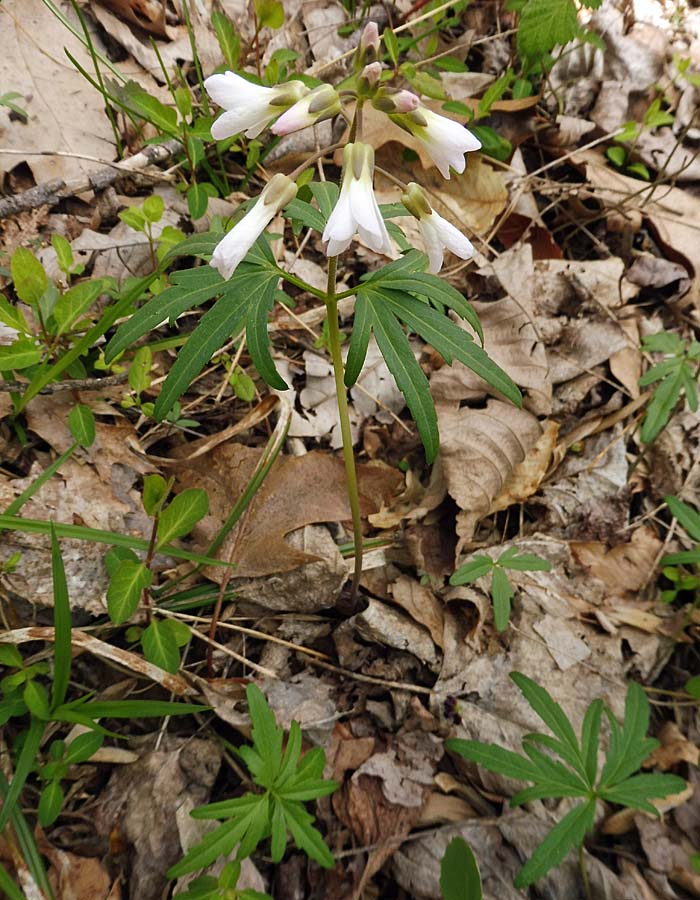 In these photos, the plant/flower stalks do not have rhizomal leaves directly under them but there are rhizomal leaves nearby. The rhizomal leaves emerge separately from plant stalk from the underground rhizomes and many times are not very close to the plant stalk.
In these photos, the plant/flower stalks do not have rhizomal leaves directly under them but there are rhizomal leaves nearby. The rhizomal leaves emerge separately from plant stalk from the underground rhizomes and many times are not very close to the plant stalk.
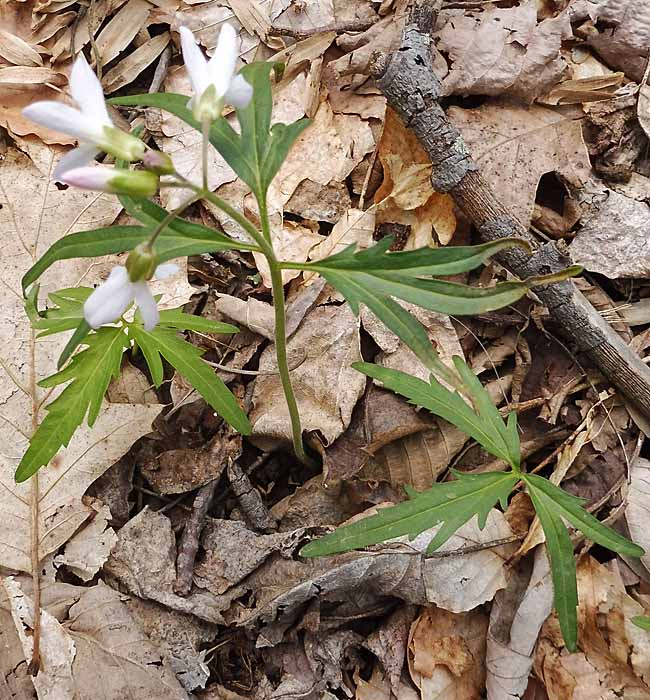
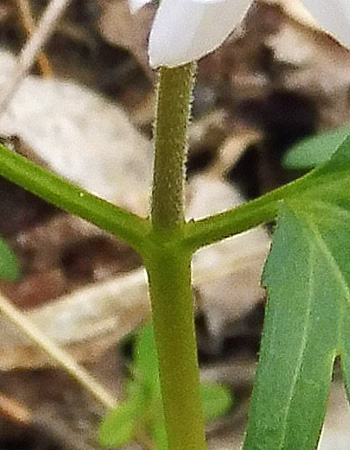 In this photo, the stem hairs can be seen above the cauline leaves and the stem is smoothe beneath. Also seen is the grooved petiole (leaf stalk).
In this photo, the stem hairs can be seen above the cauline leaves and the stem is smoothe beneath. Also seen is the grooved petiole (leaf stalk).
Habitat
Habitat: moist, rich deciduous forests where there is deep leaf litter and soil with high organic matter.
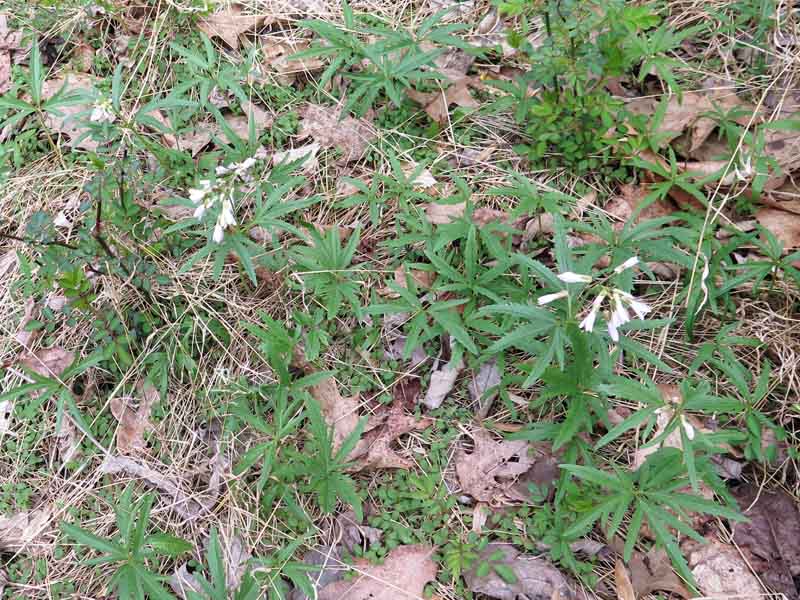
Text by Millie Ling and all photos by Hubert & Millie Ling. Photos: flowers - April 16-29, cultivation & various parks/preserves in central NJ.
Cultivation
The cultivation material below is courtesy of
Jersey Friendly Yards searchable plant database: Cardamine concatenata
Bloom Times: Spring
Hardiness Zone: 6a, 6b, 7a, 7b
Soil Type: Loam, Organic, Sandy
Soil Moisture: Dry, Moist
Drought Tolerance: Low
Soil pH: Slightly Acidic, Neutral
Salt Tolerance: Unknown
Optimal Light: Partial Shade
Light Range: Partial Shade, Shade
Size: 0.5 - 1 ft
Growth Rate: Slow
Deer Resistance: None
Additional information
Additional information / references:
- The USDA website shows Cardamine concatenata distribution in the US and other information: https://plants.usda.gov/home/plantProfile?symbol=CACO26
- efloras : http://www.efloras.org/florataxon.aspx?flora_id=1&taxon_id=242416228
- Arkansas Native Plant Society - Know your Native - good information and photos: https://anps.org/2016/02/29/know-your-natives-cut-leaf-toothwort/
- Missouriplants- good information and photos: https://www.missouriplants.com/Cardamine_concatenata_page.html
- Jersey-Friendly Yards - great gardening information: https://www.jerseyyards.org/plant/cardamine-concatenate/